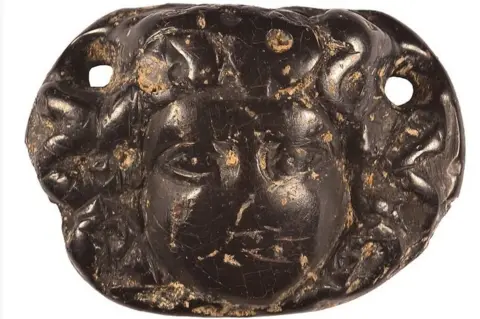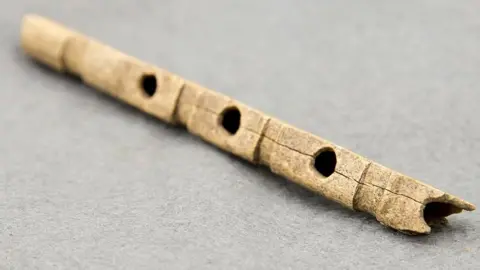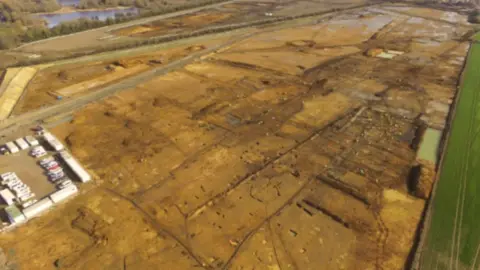Medusa pendant and Medieval village found during A14 excavations
 Highways England, courtesy of MOLA Headland
Highways England, courtesy of MOLA Headland A Medieval village and Roman Medusa pendant are among the finds uncovered by archaeologists investigating a stretch of the A14.
A team of about 250 archaeologists have been working on Highways England's £1.5bn scheme to improve the section of road between Cambridge and Huntingdon.
The remains of 12 medieval buildings have been found and the entire layout of the village is discernible.
Archaeologists also found a Roman trade distribution centre.
 Highways England, courtesy of MOLA Headland
Highways England, courtesy of MOLA Headland The Roman site would have been pivotal to the region's supply chain.
It was linked to the surrounding farmsteads by trackways as well as the main Roman road between Cambridge and Godmanchester, archaeologists said.
Teams led by the Museum of London Archaeology (MOLA) have dug more than 40 separate excavation areas, and expect to complete work by summer.
They also discovered three prehistoric henge monuments, possibly for ceremonial gatherings, which measure up to 50m (164ft) in diameter.
 Highways England, courtesy of MOLA Headland
Highways England, courtesy of MOLA Headland Artefacts uncovered include a rare Anglo Saxon bone flute from the 5th to 9th Century, an ornate Roman jet pendant depicting the head of Medusa - a mythological creature with snakes for hair - and a Middle Iron Age timber ladder.
Dr Steve Sherlock, archaeology lead for the A14 Cambridge to Huntingdon project for Highways England, said: "The archive of finds, samples and original records will be stored so that the data and knowledge is preserved for this and future generations."
Kasia Gdaniec, senior archaeologist for Cambridgeshire County Council, said the archaeology programme had exposed an "astonishing array of remarkable new sites that reveal the previously unknown character of ancient settlement across the western Cambridgeshire clay plain".
